Explore the Latest Developments in Dubai Metro Map
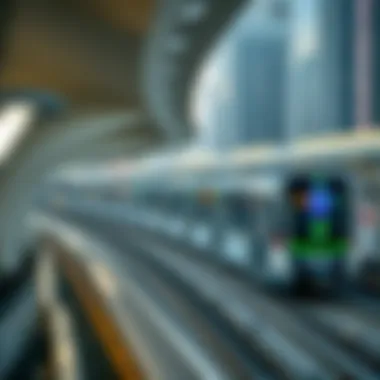
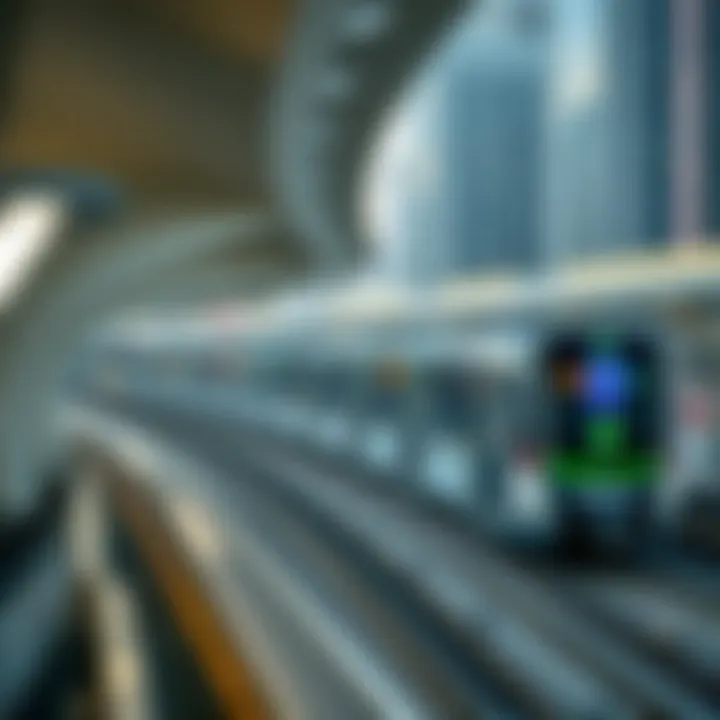
Intro
Dubai's rapid development has positioned it as a global hub for commerce and tourism. The city's infrastructure, particularly its metro system, plays a crucial role in this evolution. Key to navigating this urban landscape is understanding the latest variations in the Dubai Metro map, which has seen significant updates aimed at improving the commuting experience.
This guide goes beyond merely depicting the updated routes; it delves into deeper implications for daily commuters as well as the broader real estate landscape. The expansion of the metro system not only facilitates easier access to vital areas but is also reshaping the dynamics of property values, as proximity to these transport links becomes increasingly sought after.
As we navigate through the various sections of this article, expect to find insights that illuminate market trends, property buying strategies, and selling tips tailored specifically to the evolving context of the Dubai Metro enhancements.
Preamble to the Dubai Metro System
Understanding the Dubai Metro System is crucial not just for daily commuters but also for investors and real estate agents eyeing opportunities in the city. The metro system has grown beyond a mere transport facility; it acts as a spine, supporting urban life and development in rapid-growth areas. With an eye-catching map etched with bright red and green lines, each twist and turn reflects the ongoing evolution of urban mobility in one of the most dynamic cities in the world.
Historical Overview
The origins of the Dubai Metro can be traced back to the late 1990s when the local government recognized the impending need for a robust public transport system. The first line was inaugurated on September 9, 2009, coinciding neatly with the UAE's celebrations for their 38th National Day. It was not just a milestone for the emirate but a significant leap towards integrating modern technology with urban transportation.
From its initial stages, the project faced its own set of challenges. These included navigating through an array of logistical difficulties, coordinating construction in a rapidly spreading urban environment, and ensuring the system could handle the burgeoning population. Despite these obstacles, the metro has not only survived but thrived, showcasing architectural feats and engineering prowess that are astonishing.
As of now, the Dubai Metro spans a whopping 75 kilometers and boasts a total of 49 stations. This extensive network provides commuters with an efficient alternative to the congested roads, defining a new era in how residents traverse the city.
Significance to Urban Mobility
The significance of the Dubai Metro isn’t simply in its length or the number of riders it accommodates. It reshapes how people experience the city. The metro connects key urban areas, creating an environment where individuals can easily access work, education, and recreation without the usual stressors of traffic congestion.
- Sustainability: The metro represents a green approach to urban transport, significantly reducing carbon footprints when compared to traditional vehicles. As Dubai looks forward to sustainability goals, the metro system aligns perfectly with those aspirations.
- Accessibility: Long gone are the days when public transportation was a hassle. The metro is designed to be user-friendly, catering to individuals with disabilities and those unfamiliar with the transport landscape.
- Economic Impact: As the metro expands, it creates a ripple effect across the real estate market. Areas near metro stations witness postive property value fluctuations, making it an essential factor for investors and homebuyers alike.
"Public transport is not just about moving people; it's about creating opportunities and enhancing the quality of urban life."
Given its central role in urban mobility, the Dubai Metro becomes a focal point for discussions surrounding infrastructure development and city planning. Consequently, understanding this system provides insights into the broader picture of Dubai's growth and future trajectories.
Overview of the Latest Dubai Metro Map
Understanding the latest Dubai Metro map is essential for several reasons. With a rapidly growing urban landscape, the metro system stands as a backbone of the city's public transport network. This map isn't just a collection of lines and stations; it represents a carefully planned system designed to address the diverse needs of commuters, investors, and residents alike. Bright and easily navigable, the map reflects the city's commitment to enhancing public transport, which is a key driver for economic growth and social cohesion.
Current Routes and Lines
The current routes and lines effectively showcase the geography and urban sprawl of Dubai. As it stands, the metro comprises two primary lines: the Red Line and the Green Line. The Red Line, stretching from Rashidiya to UAE Exchange, plays a significant role in connecting major leisure and commercial districts, including areas like Downtown Dubai and Dubai Marina. Simultaneously, the Green Line connects key residential areas and business districts, forming vital links with local bus services.
Concurrently, the metro’s design accommodates dual functions: commuting and tourism. Passengers benefit from uninterrupted service due to optimized schedules, while tourists can conveniently access attractions like the Burj Khalifa and the Dubai Mall.
New Additions and Extensions
With ongoing expansion, the latest updates to the Dubai Metro map include newly proposed lines that promise to relieve congestion and connect previously isolated areas. The upcoming lines not only aim to ease traffic on bustling roads but are also anticipated to bolster property values in neighboring zones. For instance, plans for the Purple Line will cater to areas currently underserved by public transport while facilitating faster routes between key landmarks. Additionally, extensions of existing lines demonstrate Dubai's unwavering commitment to improving urban mobility. These developments are expected to integrate seamlessly, providing an even more interconnected transport network.
Interactive Features of the Map
In the digital age, the interactive elements of the latest Dubai Metro map cannot be overlooked. Users can access an online version that features real-time updates about service status, upcoming maintenance schedules, and estimated arrival times. This digitization enhances user experience by allowing commuters to plan their journeys with precision. Detailed station information, such as available facilities and nearby attractions, can be found easily through the app or online interface.
Moreover, the map's user-centric design focuses on accessibility. It's available in multiple languages and is equipped with features for visually impaired users, showcasing Dubai's dedication to inclusivity. By incorporating user feedback, the designers continually refine map elements, ensuring that the final product meets various commuting needs.
"An effective transportation map can transform the way people navigate a city, turning chaos into convenience."


For those involved in real estate�—agents, investors, and developers, this updated Dubai Metro map functions as a critical tool. Understanding the intricacies of its routes and features can profoundly affect investment decisions and community development strategies.
Key Metro Stations and Their Importance
The Dubai Metro is not just a means of transportation; it serves as a vital artery for the city, facilitating movement and shaping the urban landscape. Understanding the significance of key metro stations is crucial for both daily commuters and those involved in real estate. Stations act as more than transit points; they influence economic growth, urban development, and community engagement. In this section, we’ll delve into the importance of major transfer points and explore how certain stations affect property values in their vicinity.
Major Transfer Points
When we talk about major transfer points in the Dubai Metro system, the conversation centers around connectivity. Stations like Union, BurJuman, and Deira City Centre serve as critical hubs where multiple lines intersect, enabling travelers to switch lines seamlessly. This connectivity cuts down on travel time, making commuting more efficient.
- Union Station - A significant junction that connects the Red Line and the Green Line, Union Station offers easy access to several key areas, including the vibrant districts of Deira and Bur Dubai.
- BurJuman Station - This station supports the Fairmont and Dubai Mall, attracting not just commuters but also shoppers and tourists.
- Deira City Centre - A hotspot for shopping and entertainment, this station connects the Red Line and serves a bustling neighborhood, facilitating foot traffic and enhancing local businesses.
These transfer points significantly enhance the user experience by providing varied routes, making it easier for passengers to navigate the city. Not only do they optimize travel, but they also contribute to the economic viability of the surrounding areas, making them prime locations for retail spaces and services.
Stations Impacting Real Estate
Real estate dynamics in Dubai cannot be overlooked when discussing metro stations. The proximity to metro stations frequently dictates property values, and several key stations exemplify this correlation.
- Dubai Marina Station: A sought-after location, this station enhances property value in the high-rise buildings that dot the skyline. Investors see potential here due to the connectivity to both existing developments and future initiatives along the coast.
- Jumeirah Lake Towers Station: Close by, properties have witnessed increased interest, aided by the convenience of public transport. With amenities nearby, it’s becoming a hub for young professionals.
- Al Jafiliya Station: As the city expands, this station connects residential and commercial sites, positively impacting real estate trends in the surrounding neighborhoods.
These locations prove that the Dubai Metro is a key player in the real estate market; properties near metro stations often attract higher demand. Investors and homebuyers are wise to consider transport accessibility when making decisions.
"Proximity to metro stations can uplift property values, making it a hotbed for real estate investment."
As urban development continues and new stations are built, understanding the role of key metro stations will be critical for those navigating the intricate landscape of Dubai’s property market. Investors, real estate agents, and homebuyers alike should watch these hubs closely, as they often forecast future trends in property value and community development.
Impact of the Metro on Property Values
The construction and expansion of the Dubai Metro significantly impact property values across various neighborhoods. Access to rapid transit alters perceptions of location desirability. Investors keen on the dynamics of real estate find that proximity to metro stations can command a premium. More than just a convenience, the metro acts as a catalyst for change in local property markets.
Correlation with Nearby Developments
The relationship between the metro's presence and nearby developments can be likened to a flourishing garden; when nurtured, it attracts attention and growth. Areas adjacent to metro stations often witness an influx of new constructions like residential complexes, retail spaces, and even recreational facilities. This growth spurt is not simply coincidental. Developers, recognizing the potential for increased foot traffic and accessibility, tend to favor sites close to transit hubs.
- Increased Commercial Ventures: Businesses thrive on visibility and convenience, making property adjacent to metro lines, especially appealing. Food courts, cafes, and shopping malls sprout as the demand for amenities goes hand-in-hand with public transport access.
- Residential Appeal: Homebuyers, especially families and young professionals, seek the practicality of efficient transport options. Statistics show properties located within a kilometer of stations often see better price stability and growth compared to their counterparts in less accessible areas.
Such correlations signal a domino effect; new developments not only enhance the allure of the area but also increase the overall market value of properties. Developers and investors closely monitor these trends, using them as essential criteria in their decision-making processes.
Long-term Price Trends
A long view of the impact of the Dubai Metro on property values indicates resilient upward trends in areas served by the metro. Historically, neighborhoods that gained metro access observed a gradual yet notable appreciation in property prices.
"Users tend to stay loyal to accessible areas, and as new lines open, property values tend to follow suit."
- Steady Increases: Over the last few years, data show that real estate prices within 500 meters of metro stations tend to climb faster compared to those located farther away. Investing in such areas seems like hitting two birds with one stone: capital appreciation and rental yield.
- Market Resilience: Even in economic downturns, areas with metro station points demonstrate better resilience. Investors observe that renters, too, are drawn more to properties close to efficient transport, often providing more stable rental income, making these properties less prone to depreciation.
In addition to attracting residents and businesses alike, the very existence of a metro line enhances the area's profile in the long run, ensuring robustness against market fluctuations. Together with nearby developments, the metro doesn't just shape values; it shapes community identity and cohesion.
As the narrative of the Dubai Metro unfolds, its role in transforming property values remains pivotal. With each new station, stories of growth, demand, and evolving neighborhoods continue to emerge, creating a complex tapestry of urban development.
User Experience and Accessibility
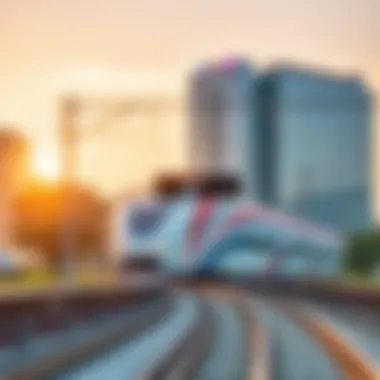

User experience and accessibility are critical components of the Dubai Metro system, impacting every commuter who relies on this form of urban transport. To ensure an efficient and pleasant travel experience, several factors come into play including the ease of navigating ticketing options, the affordability of fares, and how well the Metro integrates with other transportation options throughout the city. These aspects not only benefit daily commuters but also hold significant implications for real estate developments in proximity to metro stations.
Ticketing and Fare Structure
The ticketing system for the Dubai Metro is designed to be user-friendly, catering to a wide range of commuters from tourists to local residents. The fare structure is based on a zone system, which means that costs are determined by the number of zones traveled. This setup helps provide a fair pricing model while encouraging users to explore further distances without the burden of heavy charges.
There are several types of tickets available, including:
- Standard NOL Card: Ideal for frequent travelers, allowing unlimited rides within a specified time frame.
- Silver NOL Card: For those who wish to travel often without the need for single-use tickets.
- Gold NOL Card: Offers access to first-class cabins for a more luxurious travel experience.
Additionally, mobile applications play a vital role. Commuters can use the RTA app to check fare costs, view schedules, and even recharge their NOL cards seamlessly. This blend of technology and accessibility encourages more users to opt for the Metro as their primary mode of transport.
Connectivity with Other Transport Systems
The integration of the Dubai Metro with other transport systems greatly enhances its usability. The Metro undoubtedly serves as a backbone for the city’s public transportation framework, yet its true effectiveness comes from how well it connects with buses, taxis, and even water transport.
Key aspects include:
- Bus Services: Numerous bus routes complement the Metro, offering direct links to areas not immediately accessible by train. This significantly extends the reach of the Metro, making the entire public transport network more cohesive.
- Taxis and Ride-hailing Services: Designated taxi ranks at Metro stations allow for convenient transfers to personal vehicles. Companies like Uber and Careem also provide pick-up and drop-off points in close proximity, ensuring seamless transitions.
- Water Taxis and Ferries: For those living along the Dubai Creek or heading to tourist spots like the Dubai Marina, these services unlock new travel paths and ensure scenic routes, providing a unique perspective of the city.
"The future of urban transport lies in how well each system connects, creating an ecosystem that serves the needs of its users effectively."
Overall, the emphasis on user experience and accessibility not only elevates commuter satisfaction but also indirectly influences real estate around metro stations. Developers are acutely aware that proximity to a well-connected public transport system is often a sales point, making it imperative for them to consider the evolving needs of the market.
Future Expansion Plans for the Metro
In the context of the Dubai Metro's evolving landscape, future expansion plans hold immense significance. These plans are not just blueprints on a drawing board; they represent the city’s vision for better connectivity, urban growth, and economic development. The expansions are designed not only to enhance public transportation accessibility but also to fuel the real estate market by linking previously isolated areas to the core urban environment. As the city continues to burgeon, aligning robust transport options with urban planning is essential for sustainable development.
Proposed Lines and Developments
Looking ahead, several proposed metro lines are under consideration within Dubai's extensive transportation strategy. Among these is the highly anticipated Blue Line, which is expected to run from Dubai Marina to Al Quoz, connecting key business districts and leisure hotspots. This line aims to alleviate congestion by providing direct access to various commercial hubs.Myriad smaller extensions are also on the cards, aimed at optimizing reach and service frequency on less-trafficked routes.
Furthermore, consideration is being given to a new line that would connect the Dubai Expo 2020 site to major residential areas such as Dubai Hills Estate and Downtown Dubai. Such developments underscore the intention to make areas with high prospective property value more accessible.
However, the proposals extend beyond simple routes. There’s also a focus on integrating modern technologies within the expansion, like automated systems and smart ticketing solutions, which can streamline operations and enhance user experience.
Projected Timelines for New Projects
As the plans stand, the timeline for these new metro lines is ambitious yet realistic. The Blue Line, for instance, is projected to be operational by 2028, in time for the anticipated population growth as well as sporting events that will draw even larger crowds to the region.
In general, most expansions are slated to commence construction within the next few years. This schedule is aligned with Dubai's overall economic goals, particularly as it gears up for global events and aims to bolster its reputation as a leading global hub. Key goals include:
- Completion of feasibility studies by 2025;
- Initial construction phases initiated by early 2026;
- Operational testing and adjustments by 2028.
"These expansion plans are not merely about adding more trains or tracks; they reflect a broader strategy to integrate Dubai into a future where public transport plays a crucial role in daily life."
By methodically laying out these timelines, stakeholders, including investors, real estate agents, and city planners, can better strategize their efforts to tap into the emerging opportunities that arise from increased connectivity.
Amidst these developments, it will be crucial to monitor progress closely. The future of metro expansion is not just about infrastructure but the promise of a more interconnected, accessible city that stands to benefit both current residents and newcomers alike.
Challenges Faced by the Dubai Metro
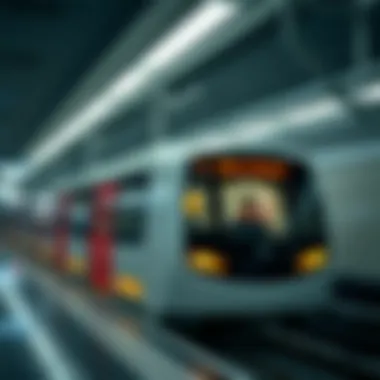
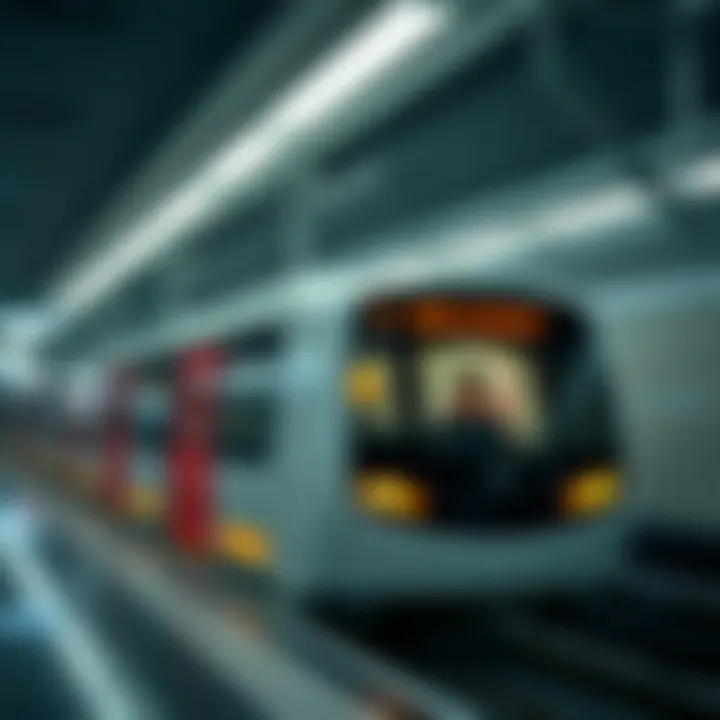
The Dubai Metro has transformed the city's public transport landscape, but like any large-scale infrastructure project, it has its share of hurdles. Understanding these challenges is pivotal for stakeholders, from government officials to real estate investors. Knowing these can help during decision-making regarding development and investment in areas influenced by the metro. Today, let's dive into both operational and maintenance issues, along with user critiques and suggestions to glean better insight into the situation.
Operational and Maintenance Issues
When it comes to the efficient running of the Dubai Metro, operational and maintenance issues are often paramount. Aging infrastructure, though relatively new compared to metros in other global cities, can lead to unforeseen disruptions. For instance, routine maintenance can sometimes create service delays, inconveniencing daily commuters.
- Power Supply: A continuous and reliable energy source is needed. Any faults in this area can halt operations, causing delays that string of canceled rides.
- Track Maintenance: Keeping the tracks in good shape is crucial. Periodic wear might lead to accidents or service interruptions, which is something any metro would want to avoid.
- Technology Updates: With rapid advancements in technology, the need for updated signaling systems is essential for safety and efficiency. But these updates require time and investment, possibly leading to service disruptions during the upgrade process.
“Regular checks and maintenance, like checking the brakes in a car, can save a lot of headache later.”
In essence, managing these issues needs a consistent strategy to ensure minimal impact on commuters.
User Critiques and Suggestions
Feedback from users can act like a compass for improving any system, and the Dubai Metro is no exception. Commuters often have insightful critiques about their experiences, and their suggestions can pave the way for enhancements.
- Crowding During Peak Hours: Many users highlight over-crowded trains as a pressing issue, especially during peak hours. Suggestions such as increasing the frequency of trains could alleviate this bottleneck.
- Accessibility Features: Some have pointed out the importance of better accessibility for those with disabilities. Simple changes, like clearer signage or more elevators, could really make a difference in the user experience.
- Real-time Updates: The demand for real-time tracking of train schedules has risen. Users often feel out of the loop when faced with unexpected changes in the metro timetable. Incorporating more digital displays in stations and enhancing mobile application functionalities may serve as solutions.
The continual loop of feedback-implementation can foster an evolving and user-centered metro system.
Together, addressing operational grievances and integrating user suggestions is not just about correcting mistakes; it’s about building a reliable metro that aligns well with the demands of a bustling city like Dubai. Engaging with these challenges can transform them into stepping stones towards a more effective public transport solution.
Comparative Analysis with Global Metros
Understanding the Dubai Metro and its placement on the global stage provides insights into its unique characteristics and areas for improvement. This section outlines how Dubai's mass transit system compares with others around the world, including features, benefits, and critical considerations. By examining aspects like design, efficiency, and user experience, we shed light on how the Dubai Metro can evolve and adapt in a competitive landscape.
Key Differences and Similarities
When scrutinizing the Dubai Metro alongside global systems, several key differences become apparent.
- Frequency and Coverage: Unlike some metros, such as Tokyo, which operate on very tight schedules and cover vast areas, Dubai Metro has fewer lines yet maintains a punctual service. Travelers notice that despite the reduced coverage, the frequency is commendable, particularly during peak hours.
- Technology Integration: The Dubai Metro excels in its use of technology. Many systems rely on traditional ticketing methods, while Dubai has invested in smart cards and apps for a seamless experience. This tech-savvy approach provides users with updates and alerts in real time.
- Design and Aesthetics: Compared to older systems like London’s Underground, the Dubai Metro boasts modern architecture and spacious, clean stations, making it visually appealing.
These components reflect a blend of the Middle Eastern culture with cutting-edge technology, presenting a refreshing take on urban transit.
Lessons from Other Cities
Observing successful mass transit models globally offers invaluable lessons for the Dubai Metro. Here are a few pointers:
- Sustainability Practices: Cities like Copenhagen focus on eco-friendly transit solutions. Learning from them, Dubai can enhance its green initiatives, perhaps through electric trains or solar energy in stations.
- User-Centric Design: New York's Metro often garners feedback for its user experience. Implementing aspects such as clearer signage and additional amenities could provide an enhanced experience for commuters in Dubai.
- Intermodal Connectivity: Zurich’s system is renowned for its ease of switching between different modes of transport. If Dubai can streamline this process further by ensuring better links to buses and taxis, it could elevate overall satisfaction for users.
Adapting and learning from these cities' strengths allows the Dubai Metro to aspire towards becoming a benchmark for transit systems worldwide.
In summary, while the Dubai Metro carries its unique identity, a comparative analysis with global metro systems indicates that there’s always room for advancement. Harnessing insights from other cities not only informs effective strategies but also aligns with the vision of a future-ready urban transit system.
Finale and Takeaways
In reflecting on the essence of this guide to the Dubai Metro, it’s clear that the system serves as more than just a mode of transportation. It plays a pivotal role in shaping urban mobility within one of the fastest-growing metropolises in the world. Understanding where the Dubai Metro stands today provides insights not only into one of the UAE's most significant infrastructural achievements but also into the future trajectory of its development.
The latest map serves as a roadmap for commuters and investors alike, highlighting the interconnectivity that enhances daily transportation while simultaneously impacting property values across the city. As we've seen, the latest expansions and route adjustments reflect the growing demand for efficient transit options.
There are several key elements that form the crux of this topic:
- Infrastructure Development: The metro underpins the urban symphony of Dubai, connecting areas that drive both economic activity and residential vibrancy.
- Urban Planning: The intersections of roads, parks, and commercial districts around stations are designed with future needs in mind; companies and investors are already eyeing opportunities that the new routes create.
- Trends in Real Estate: The correlation between metro accessibility and increased property desirability is evident, making it a paramount consideration for stakeholders in the real estate market.
As we look toward the future, the potential developments hinted at within this article suggest a dynamic landscape for those involved in real estate, both as investors and as homebuyers. The significance of the metro in facilitating urban growth cannot be overstated, and it should remain a focal point in any discourse concerning Dubai's transformation. The Dubai Metro not only provides a glimpse into the city's present but also a window into a thriving future.
"A city’s metro system is more than tracks and trains; it’s the veins and arteries of urban life, pulse points in the ebb and flow of daily existence."
In closing, keeping a finger on the pulse of the Dubai Metro’s evolution is vital for all stakeholders in the real estate domain. With planned enhancements and expansions on the horizon, a watchful eye on developments will be necessary to leverage opportunities as they arise.















